2017 Kawasaki Ninja 650 Review
Our first ride aboard Kawasaki's newest Ninja
Up until now Kawasaki’s Ninja 650 has been recognized as a genteel gateway drug to the company’s true supersport model, the ZX-6R. For 2017 Kawasaki has further distilled more performance from the beginner-ish Ninja while maintaining the bike’s streetable mannerisms. In other words, the 2017 Ninja 650 is a more potent sportbike capable of shredding a twisty canyon road or closed course race track on the weekends, while performing commuter duty during the weekdays.
2017 Kawasaki Ninja 650
| Engine | 18.5/20 |
| Suspension/Handling | 12.0/15 |
| Transmission/Clutch | 8.5/10 |
| Brakes | 8.0/10 |
| Instruments/Controls | 5.0/5 |
| Ergonomics/Comfort | 8.0/10 |
| Appearance/Quality | 9.0/10 |
| Desirability | 8.5/10 |
| Value | 9.0/10 |
| Overall Score | 86.5/100 |
The most substantive element of the new Ninja is the bike’s drastic weight reduction of 42 pounds, giving the 650 a claimed curb weight of only 419 pounds (426 pounds with ABS). In our Middleweight Intermediate Sportbike Shootout from 2014, the Ninja 650 tipped the MO scales at 465 pounds (461 pounds for the Honda CBR650F, 470 pounds for the Yamaha FZ6R). If we were to conduct that same comparison today the Ninja would have a whopping 35- and 44-pound weight advantage over the Honda and Yamaha, respectively.
A bike weighing 42 pounds less than its predecessor shouldn’t be taken lightly (aha… aha… aha…). You can’t help but feel the bike’s increased maneuverability at around town speeds, or especially when transitioning through a tight set of switchbacks. For newer riders, a lighter curb weight is less intimidating, while experienced pilots will appreciate its newfound flickability.
2017 Kawasaki Z650 First Ride Review
Engine performance too has been massaged via a myriad of changes/improvements: fine-atomizing fuel injectors, 36mm throttle bodies and narrower intake ports, camshaft with modified profiles, airbox design, shorter exhaust pipe with no crossover tube all add up to an engine with greater low- and mid-range performance compared to last year’s model.
Usable power from the Ninja 650’s parallel-Twin is abundant and corresponds with Kawasaki’s claims for improved low- and mid-range. The engine is a willing participant in almost any situation, whether it be building revs from as low as 2,500 rpm in 6th gear without shuddering to snappier responses in 3rd spinning at a more aggressive 6,000 rpm. Some vibes are going to creep through – mainly via the seat – but nothing excessive for two pistons in a parallel arrangement.
In the technology department, the Ninja 650 comes outfitted with an Assist and Slip clutch which provides a light pull at the adjustable clutch lever, and the ability to row the gearbox with successive downshifts without fear of locking the rear wheel. The transmission also features a positive neutral finder that makes it easier to find that gearless position between 1st and 2nd.
To complement the Ninja’s sportier nature and aggressive new looks, Kawasaki reconfigured the bike’s seating position. The handlebars are now 25mm (1 inch) more forward and 42mm lower compared to the 2016 Ninja 650. As far as we’re concerned, this was a nice tweak to help performance while not putting too much weight on a rider’s wrist. In our previous shootout we complained that its front end was vague because there’s so little weight over the wheel due to the handlebar position. This new handlebar placement should help remedy that complaint.
The taller of us MO testers also had problems with the seat-to-footpeg distance in that 2014 shootout. For 2017, Kawasaki moved the footpegs 60mm forward, and while they also lowered the footpegs 15mm they also lowered the seat 15mm. The shorter seat height should help less-taller folk, but during our day ride, the uncomfortable bend in my knee didn’t go unnoticed, so our complaint about the seat-to-footpeg distance will probably remain, at least for riders pushing six feet in height.
What I definitely did like was the sloped, flat fuel tank – perfect for leaning forward and laying on for taking a rest during a long ride on a straight road, or to get out of the wind on a cold day.
Stopping power comes by way of new Nissin 2-piston calipers gripping 300mm discs up front, while a single Nissin caliper clamps on a single 220mm disc out back. We complained about how much pressure it took to get the old brakes to quickly slow the Ninja 650, and these new binders seem to perform much more efficiently. New ABS is the Bosch 9.1M that’s lighter and offers more precise anti-locking measurements. Non-ABS models remain available from Kawasaki, which offer slightly lower weight and price, but in our opinion, ABS is worth the few added pounds and dollars.
Big news in the suspension department is a new horizontal back-link KYB shock. Compared to last year’s linkageless shock, the new unit should provide a more progressive movement and reduce most occurrences of bottoming out. Rear suspension travel is the same as last year’s, and front suspension has gone unchanged. Any noticeable improvement in rear ride quality wasn’t apparent during our outing; a full suspension evaluation will have to wait until we can get a test unit.
2017 Kawasaki Ninja 650
+ Highs
- Light makes right
- Improved mid-range engine performance
- Minimal price increase
– Sighs
- Seat to footpeg ratio
- Basic brakes and suspension
- Cheap looking rear sprocket
Kawasaki has really upped its game when it comes to fit/finish, and the Ninja 650 is another stunning example of the company’s attention to detail. The Ninja 650 isn’t an A-list celebrity, but Kawasaki sure seems to treat it like one. Everywhere you look on the bike speaks quality. About the only thing we found that visually says budget is the rear sprocket. Of course, steel is used in place of aluminum, and the suspension isn’t the latest fully adjustable Öhlins unit, but what you get for the price is a competent mid-level sportbike for which you don’t have to prostitute yourself to afford.
Our cold one-day ride is only a glimpse into the improvements Kawasaki rendered on the Ninja 650. Once we get a test unit for a more in-depth evaluation, and a shootout against some of its competitors, we’ll know better how well the improvements perform. One thing we already know for certain, though, is you can’t go wrong dropping 42 pounds off of any model motorcycle, and for that reason alone the 2017 Ninja 650 is a winner in our book.
2017 Kawasaki Ninja Specifications | |
|---|---|
| Engine Type | Liquid-cooled, 4-stroke Parallel Twin |
| Displacement | 649cc |
| Bore and Stroke | 83.0 x 60.0 mm |
| Compression ratio | 10.8:1 |
| Valve system | DOHC |
| Fuel system | DFI with 36mm Keihin throttle bodies |
| Ignition | TCBI with electronic advance |
| Starting | Electric |
| Lubrication | Forced lubrication, semi-dry sump |
| Maximum power | 67.3 hp at 8,000 rpm (claimed) |
| Maximum torque | 48.5 lb-ft at 6,500 rpm (claimed) |
| Transmission | 6-speed, return shift |
| Final drive | Chain |
| Clutch | Wet multi-disc, manual |
| Frame | Trellis, high-tensile steel |
| Front suspension | 41 mm telescopic fork |
| Front wheel travel | 4.9 in. |
| Rear suspension | Horizontal Back-link with adjustable preload |
| Rear wheel travel | 5.1 in. |
| Front tire | 120/70 ZR17 Dunlop |
| Rear tire | 160/60 AR17 Dunlop Sportmax D214 |
| Front brakes | Dual semi-floating 300mm petal discs with dual-piston caliper |
| Rear brakes | Single 220 mm petal disc with single-piston caliper |
| Caster (rake) | 24.0º |
| Trail | 3.9 in. |
| Wheelbase | 55.5 inches |
| Seat height | 31.1 inches |
| Curb mass | 419 pounds/426 pounds with ABS (claimed) |
| Fuel capacity | 4.0 gallon |
A former Motorcycle.com staffer who has gone on to greener pastures, Tom Roderick still can't get the motorcycle bug out of his system. And honestly, we still miss having him around. Tom is now a regular freelance writer and tester for Motorcycle.com when his schedule allows, and his experience, riding ability, writing talent, and quick wit are still a joy to have – even if we don't get to experience it as much as we used to.
More by Tom Roderick





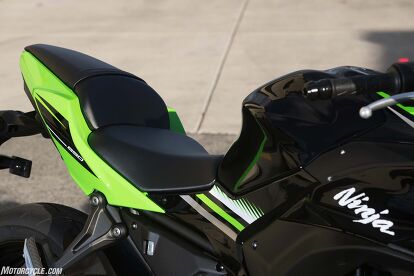






























































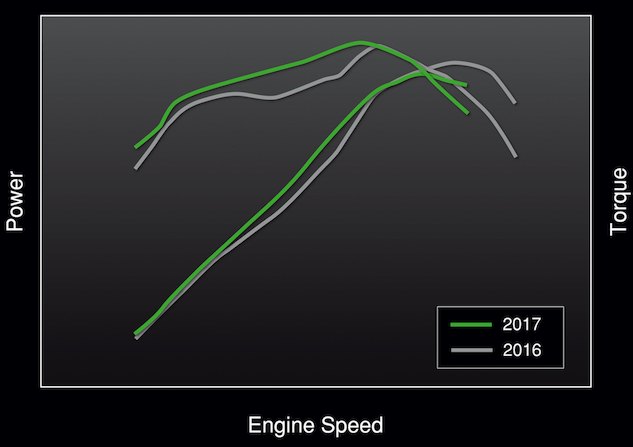















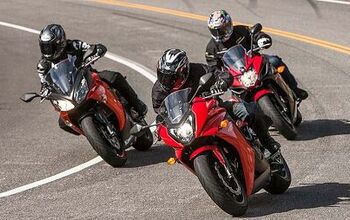







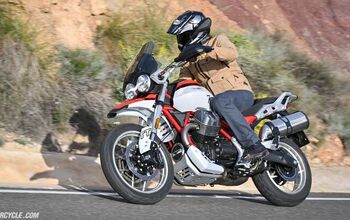

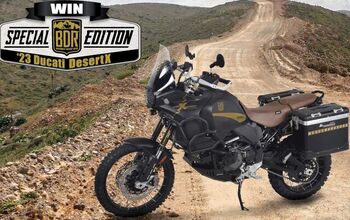
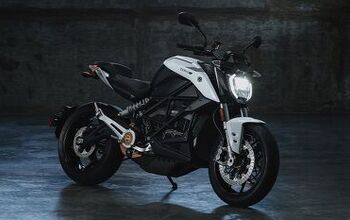

Comments
Join the conversation
I know this is an old thread, but I just returned from Daytona demo rides and rode this bike. I was really committed to riding and probably buying a Z650 because I really prefer naked bikes. However after riding the Z I was then offered the keys to this one and took advantage. I LOVED it. Never owned a bike with a fairing of any kind and just not my style, but this was a great package. Interestingly, even though both bikes have the same motor, the Ninja was much smoother overall, barely noticeable vibrations (unlike the Z) and faster and more responsive. This bike had the optional Akrapovic pipe and I'm pretty sure that made most of the difference. Also, this has clip-ons and the Z has tubular bars. I still want the Z, but this package is going to are hard to pass up....IF my wife agrees. Sigh.
Just rode this bike a few days ago when I actually went in to demo the naked Z650. For what it is supposed to be and for the price, I was very impressed. Also confused as to why this seemed to be a "better" bike to me than the Z650? Liked them both, but came away liking the Ninja more.